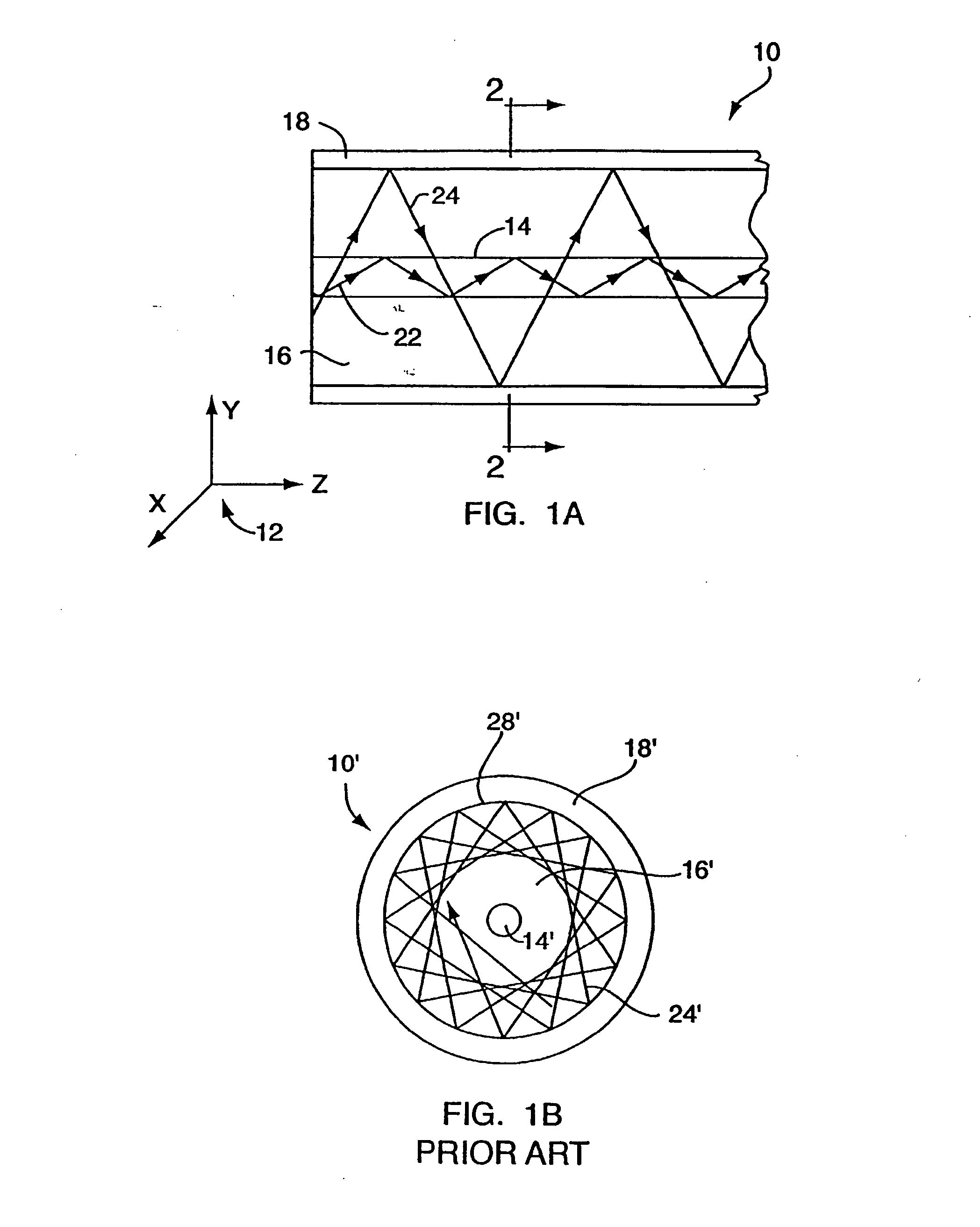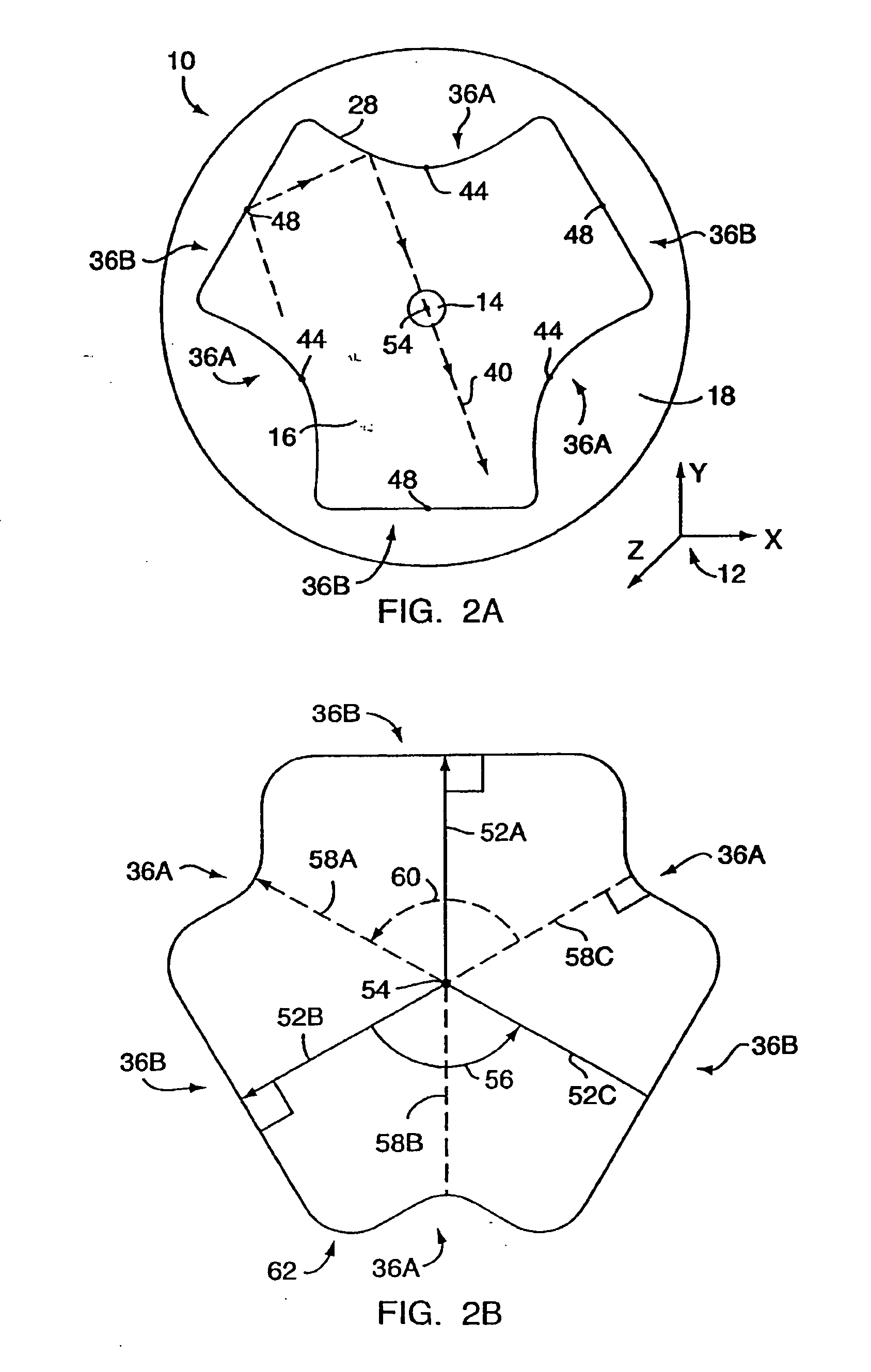Cladding-pumped optical fiber and methods for fabricating
a technology of cladding and optical fiber, applied in the field of cladding pumped fiber optic articles, can solve the problems of low absorption per unit length of optical fiber devices, detracting from the performance of optical fiber lasers or amplifiers, and pushing radiation, and achieve the effect of reducing the depth of indentations or depressions
- Summary
- Abstract
- Description
- Claims
- Application Information
AI Technical Summary
Benefits of technology
Problems solved by technology
Method used
Image
Examples
Embodiment Construction
[0038]FIG. 1A is a cross sectional view of an optical fiber article 10 that extends in the longitudinal, or Z, direction, as identified by the coordinate system 12. The optical fiber article 10 includes a core 14, a cladding 16 that surrounds the core 14, and can also include the outer layer 18 that surrounds the cladding 16. The cladding 16 includes a lower index of refraction than the core 14 such that the laser light 22 to be amplified or generated is confined largely to the core 14. The outer layer 18 includes a lower index of refraction than the cladding 16 such that the pump radiation 24 is confined largely to the cladding 16. A second outer layer, which can include a plastic or polymer or other similar material, can surround the outer layer 18 for protecting the optical fiber article 10.
[0039] The core 14 typically includes one or more rare earth dopants, which can be selected from the Lanthanide group of elements in the periodic table, in a glass matrix, which can be a sili...
PUM
| Property | Measurement | Unit |
|---|---|---|
| wavelength | aaaaa | aaaaa |
| wavelength | aaaaa | aaaaa |
| wavelength | aaaaa | aaaaa |
Abstract
Description
Claims
Application Information
 Login to View More
Login to View More - R&D
- Intellectual Property
- Life Sciences
- Materials
- Tech Scout
- Unparalleled Data Quality
- Higher Quality Content
- 60% Fewer Hallucinations
Browse by: Latest US Patents, China's latest patents, Technical Efficacy Thesaurus, Application Domain, Technology Topic, Popular Technical Reports.
© 2025 PatSnap. All rights reserved.Legal|Privacy policy|Modern Slavery Act Transparency Statement|Sitemap|About US| Contact US: help@patsnap.com



